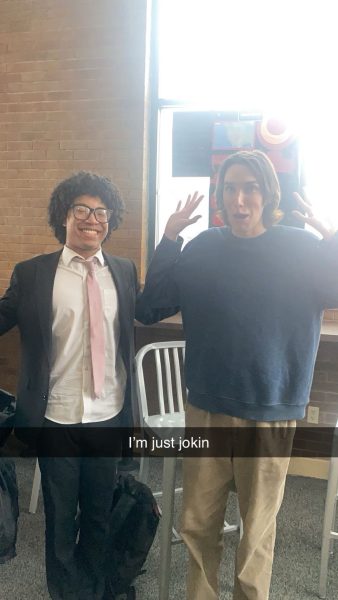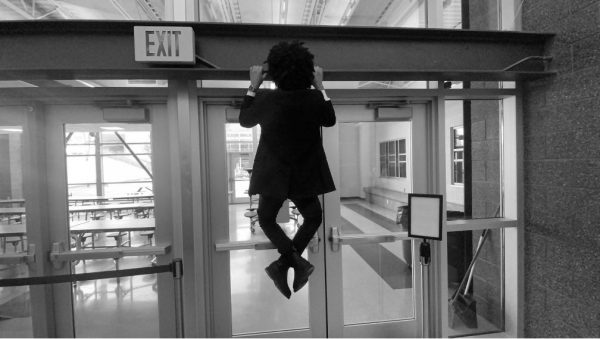Gun Legislation Misconceptions
On March 1st, 2018 Park City High School had a lock out; fifteen days after the mass shooting at Parkland High School in Florida. When the buzzing of the announcement began I started feeling… less than safe. No one else was worried. Why should I?
Was this how the students in Florida felt too before the gunshots rang out? At any moment, on any day, during any class, someone could walk into this school and kill dozens; the girl who sits next to you in math; the class clown during physics; your english teacher; the boy who sits across from you at lunch; your best friends. Your family.
Every 63 hours a school shooting incident occurs. We know what the shooter will look like (a young to middle aged white man), what gun he will be carrying (a semiautomatic weapon, most likely an AR-15) and how congress will respond (by sending their condolences). The only unknown is where.
Generation Z has never lived in a world where mass shootings do not exist. Since the year our seniors were born (1999), gun manufacturing and mass shootings (since 2011 alone) have tripled in the United States.
Not only that, but mass shootings have also become much deadlier. Fatalities per mass shooting have steadily risen with each incident. This year, in total, has already seen 52 mass shootings in 81 days, leaving 130 people dead. This statistic is often misconstrued as “total deaths from a gun”, when in fact this information does not include the lives taken by a firearm in a suicide- which accounted, “for 51% of all suicides in 2016” according to the American Foundation for Suicide Prevention.
Even though most deaths from a gun occur by suicide, the majority of mass shooters do not have a mental illness. Most shooters often show signs of one or more of these emotions: resentfulness, hatred, insecurity, paranoia, or violent behavior; but, “not always to the extent that they had been found to have a disorder,” Daniel Victor, a writer for the New York Times, explained after talking with multiple psychiatrists.
“Why don’t we impose mental health treatments to those showing signs of the emotions stated above?” is another question people argue could lower the rate of mass shootings. However, this method has not shown any effects in the past. The Sandy Hook shooter, Adam Lanza, had received counseling from multiple licensed therapists for a mild form of autism and never demonstrated any signs of violent behavior, yet, this man murdered 20 children and 6 adults in 2012.
Psychiatrists and psychologists could label people who they believed are a threat, but even if they were able to reach everyone in the United States and were 99 percent correct in their diagnoses there would be 3.2 million people labeled as a possible mass shooter. The Vox article This Cartoon Explains Why Predicting a Mass Shooting is Impossible dives deeper into this theory and explains that the Psychiatrists and psychologists (or in their case a machine) likely did correctly identify at least one mass shooter, but that person is buried with millions of other false positives.
Another method to decrease mass shootings is create stricter laws surrounding who can and cannot purchase a gun by using background checks. This is the most favorable proposal gaining support from both republicans and democrats, having an 86 percent approval rate as of 2017. There is ample evidence to show the success of this approach. One of them being Connecticut who saw a forty percent decrease in gun related deaths after passing a law that required background checks and safety courses; while Missouri, who repealed a law requiring background checks and permits, saw an increase in gun related deaths which totaled 50 percent higher than the national average.
A third process, one which was used from 1994 to 2004, known as the Violent Crime Control and Law Enforcement Act, prohibited the sales of all semiautomatic assault weapons. Liberals claim this law was effective at reducing crime, conservatives say the exact opposite. According to factcheck.org, “Both sides in the gun debate are misusing academic reports” and cherry picking facts. Although crimes committed with guns banned from this law was inconclusive, gun crimes with assault weapons did decrease, but was “offset” by the increasing use of other guns with “large capacity magazines.” However, looking at the gun homicide rates from 1981 to 2010 shows there was a 41% decrease in deaths from 1994 to 1999.
When the law wasn’t renewed in 2004 the semi automatic gun, the AR-15, then became legal for anyone to buy and have been used in most mass shootings since. Since 2004 there have been no national legislation passed by congress in regards to gun control despite having high approval ratings from both parties. This has led stores to implement their own “laws” on which guns they will sell and to which customers they will sell to. Dick Sporting Goods has been the forrunner of this method and will no longer sell assault-style rifles or sell guns to anyone younger than 21. Other stores enforcing the “21 and over” policy include Walmart, Fred Meyer, and L.L. Bean.
Other movements and events have occured in the wake of recent mass shootings, including the walkout on March 14th, where students across America walked out of their classes in support of gun control. 10 days later on March 24th people all over the globe participated in the March For Our Lives events and on April 20th another walkout is planned. In essence, large events will continue until congress passes laws which allow students to feel safe at school, employees to feel safe at work, people to feel safe at church, and fans to feel safe at concerts.









